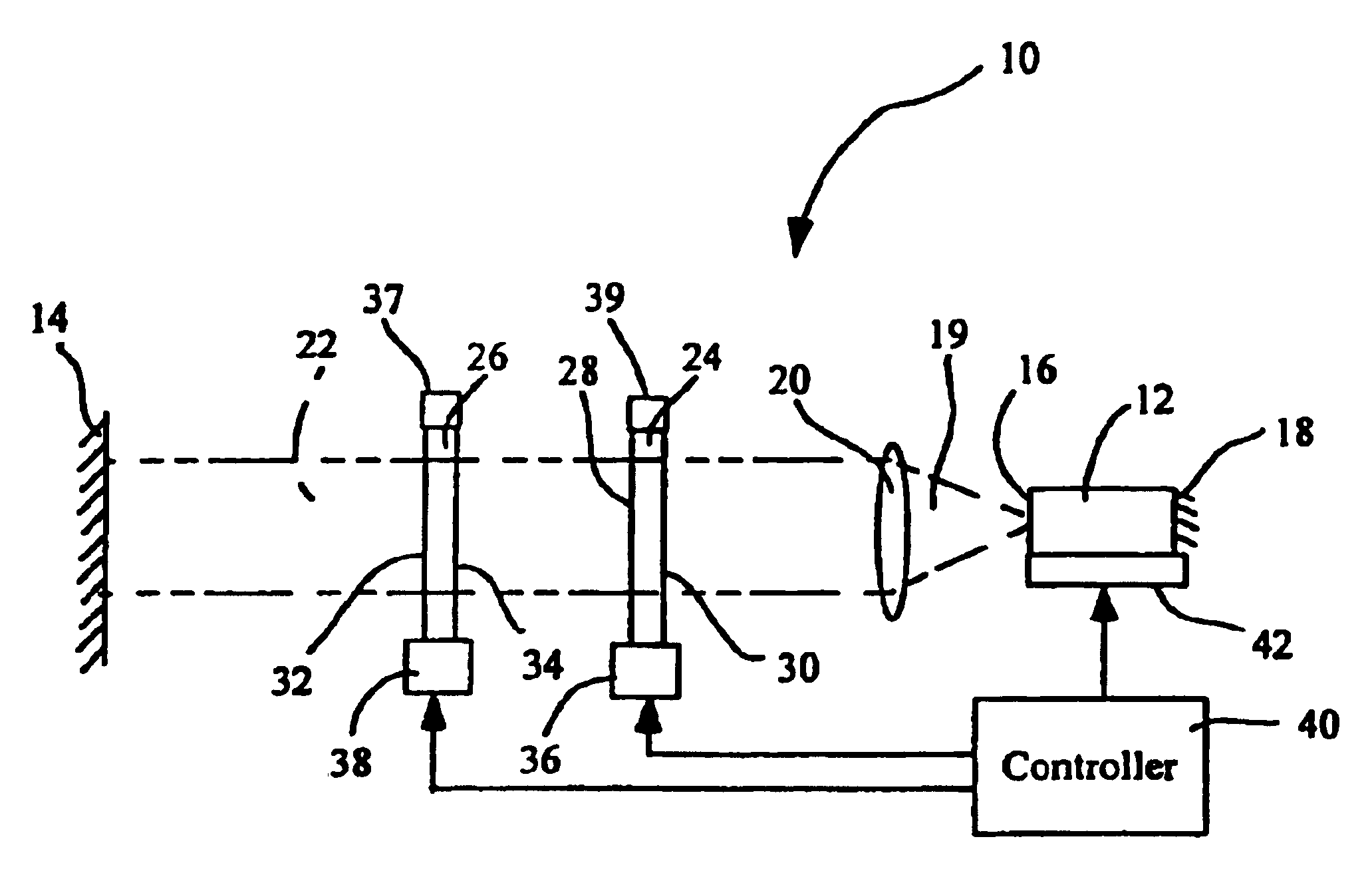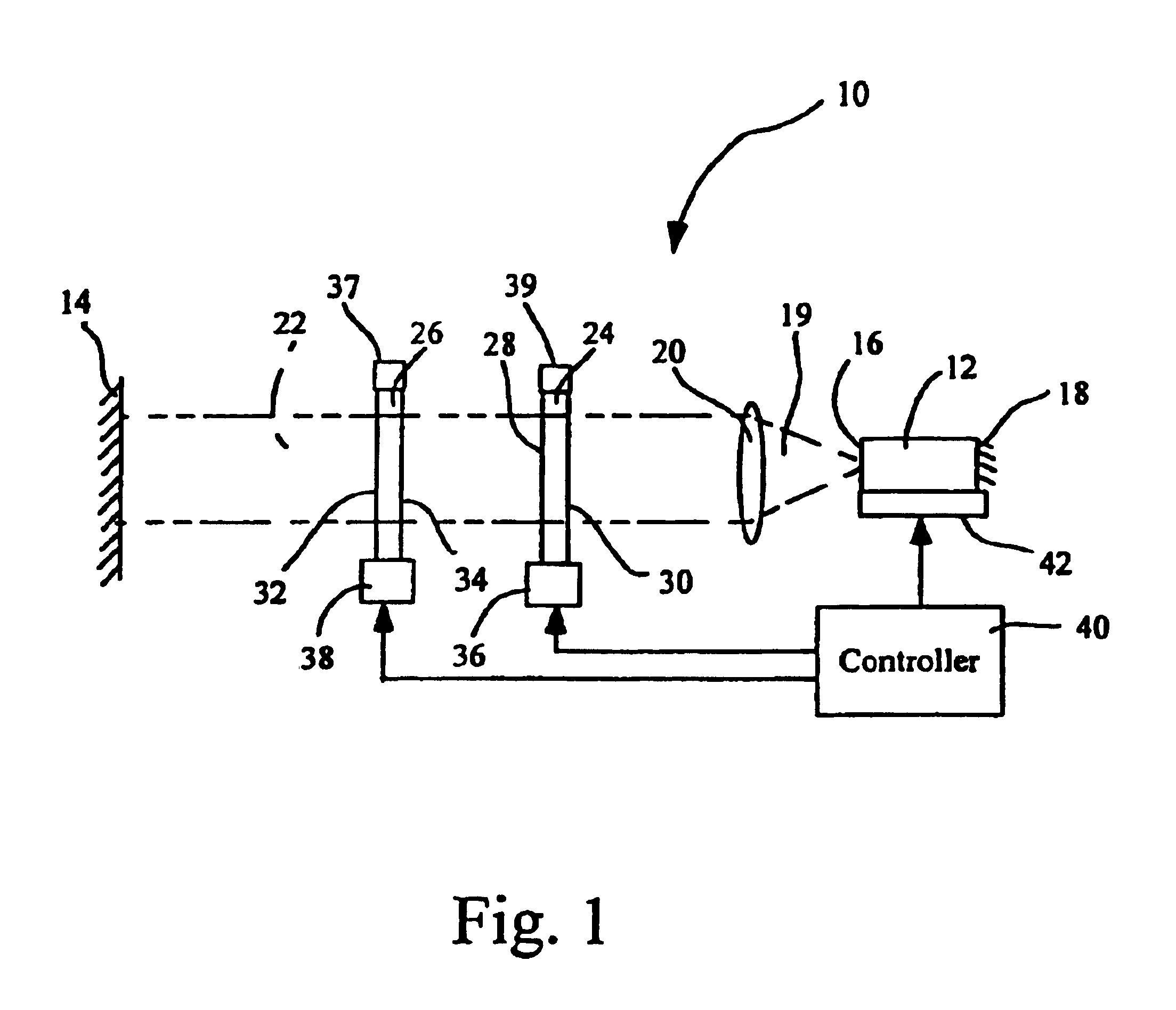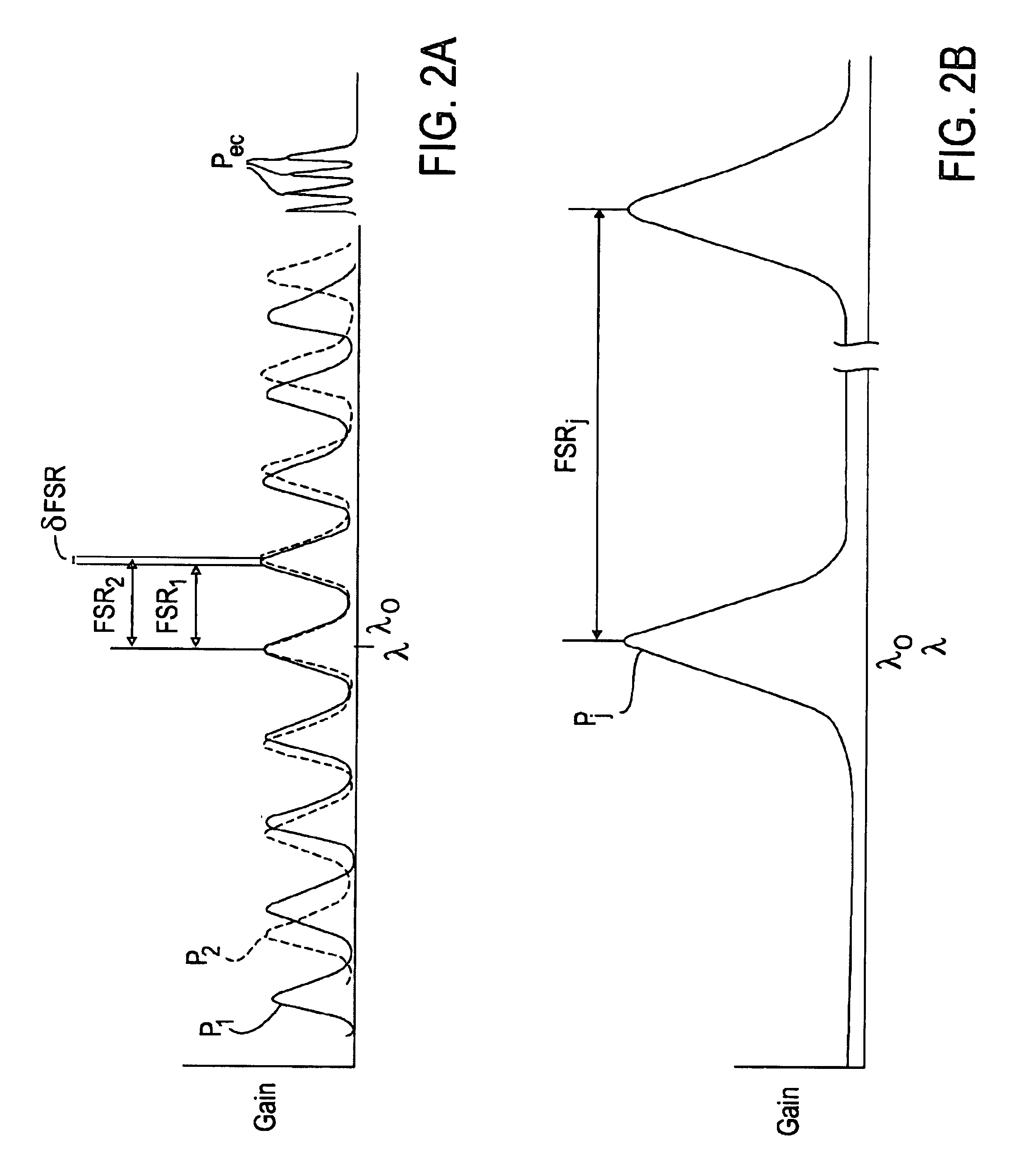Tunable external cavity laser
a laser and external cavity technology, applied in semiconductor lasers, instruments, optical elements, etc., can solve the problems of large optical power, small channel separation, and distribution of (wavelength) channel centers, and achieve the effects of avoiding multi-mode lasing, simple design, and simple implementation
- Summary
- Abstract
- Description
- Claims
- Application Information
AI Technical Summary
Benefits of technology
Problems solved by technology
Method used
Image
Examples
Embodiment Construction
Referring more specifically to the drawings, for illustrative purposes the present invention is embodied in the apparatus shown in FIG. 1 through FIG. 17. It will be appreciated that the apparatus may vary as to configuration and as to details of the parts, and that the method may vary as to details and the order of the acts, without departing from the basic concepts as disclosed herein. The invention is disclosed primarily in terms of use with an external cavity laser. The invention, however, may be used with various types of laser devices and optical systems. It should also be understood that the terminology used herein is for the purpose of describing particular embodiments only, and is not intended to be limiting, since the scope of the present invention will be limited only by the appended claims. The relative sizes of components and distances therebetween as shown in the drawings are in many instances exaggerated for reason of clarity, and should not be considered limiting.
Ref...
PUM
 Login to View More
Login to View More Abstract
Description
Claims
Application Information
 Login to View More
Login to View More - R&D
- Intellectual Property
- Life Sciences
- Materials
- Tech Scout
- Unparalleled Data Quality
- Higher Quality Content
- 60% Fewer Hallucinations
Browse by: Latest US Patents, China's latest patents, Technical Efficacy Thesaurus, Application Domain, Technology Topic, Popular Technical Reports.
© 2025 PatSnap. All rights reserved.Legal|Privacy policy|Modern Slavery Act Transparency Statement|Sitemap|About US| Contact US: help@patsnap.com



